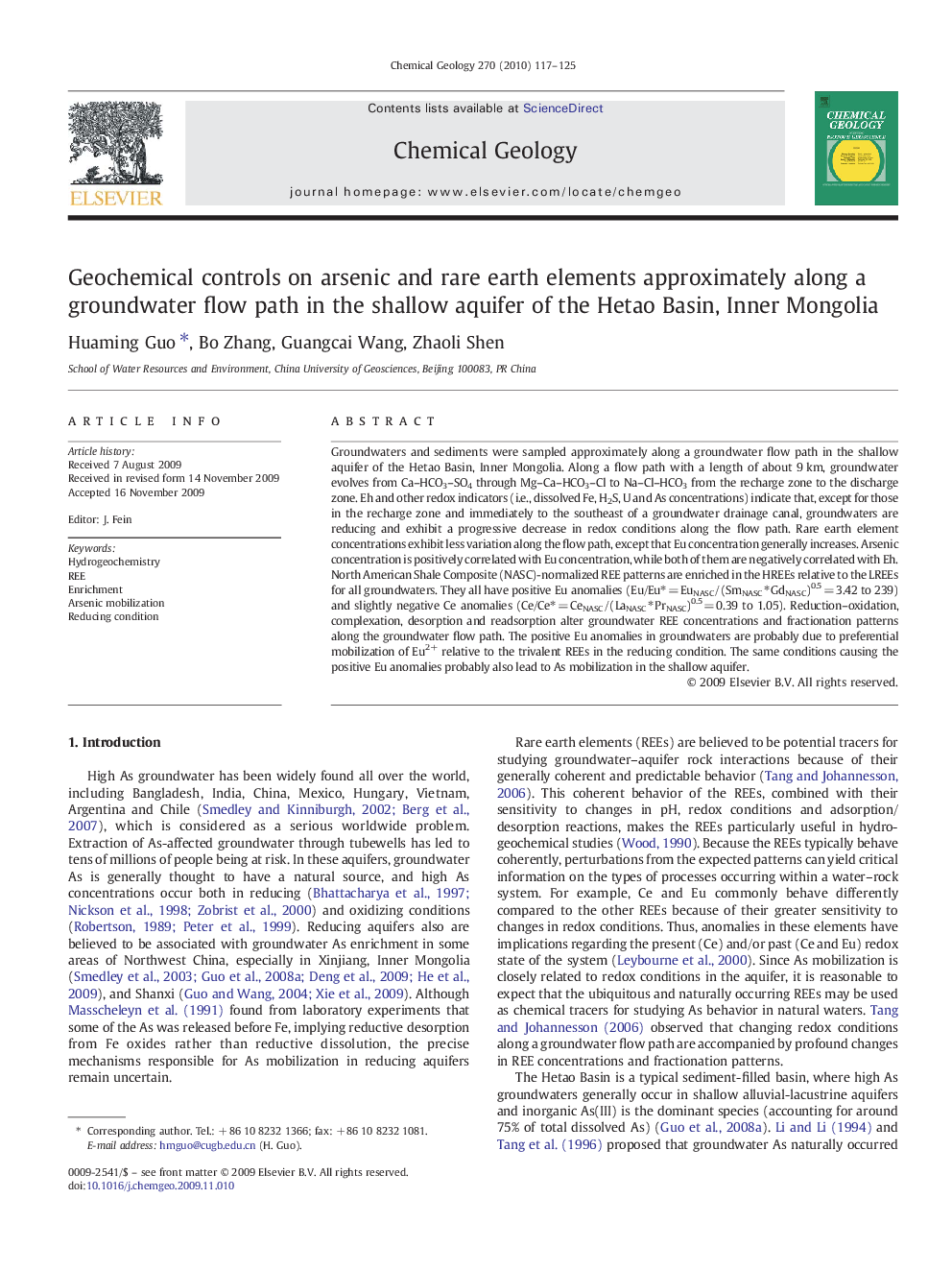| Article ID | Journal | Published Year | Pages | File Type |
|---|---|---|---|---|
| 4700071 | Chemical Geology | 2010 | 9 Pages |
Groundwaters and sediments were sampled approximately along a groundwater flow path in the shallow aquifer of the Hetao Basin, Inner Mongolia. Along a flow path with a length of about 9 km, groundwater evolves from Ca–HCO3–SO4 through Mg–Ca–HCO3–Cl to Na–Cl–HCO3 from the recharge zone to the discharge zone. Eh and other redox indicators (i.e., dissolved Fe, H2S, U and As concentrations) indicate that, except for those in the recharge zone and immediately to the southeast of a groundwater drainage canal, groundwaters are reducing and exhibit a progressive decrease in redox conditions along the flow path. Rare earth element concentrations exhibit less variation along the flow path, except that Eu concentration generally increases. Arsenic concentration is positively correlated with Eu concentration, while both of them are negatively correlated with Eh. North American Shale Composite (NASC)-normalized REE patterns are enriched in the HREEs relative to the LREEs for all groundwaters. They all have positive Eu anomalies (Eu/Eu⁎ = EuNASC / (SmNASC ⁎ GdNASC)0.5 = 3.42 to 239) and slightly negative Ce anomalies (Ce/Ce⁎ = CeNASC / (LaNASC ⁎ PrNASC)0.5 = 0.39 to 1.05). Reduction–oxidation, complexation, desorption and readsorption alter groundwater REE concentrations and fractionation patterns along the groundwater flow path. The positive Eu anomalies in groundwaters are probably due to preferential mobilization of Eu2+ relative to the trivalent REEs in the reducing condition. The same conditions causing the positive Eu anomalies probably also lead to As mobilization in the shallow aquifer.
